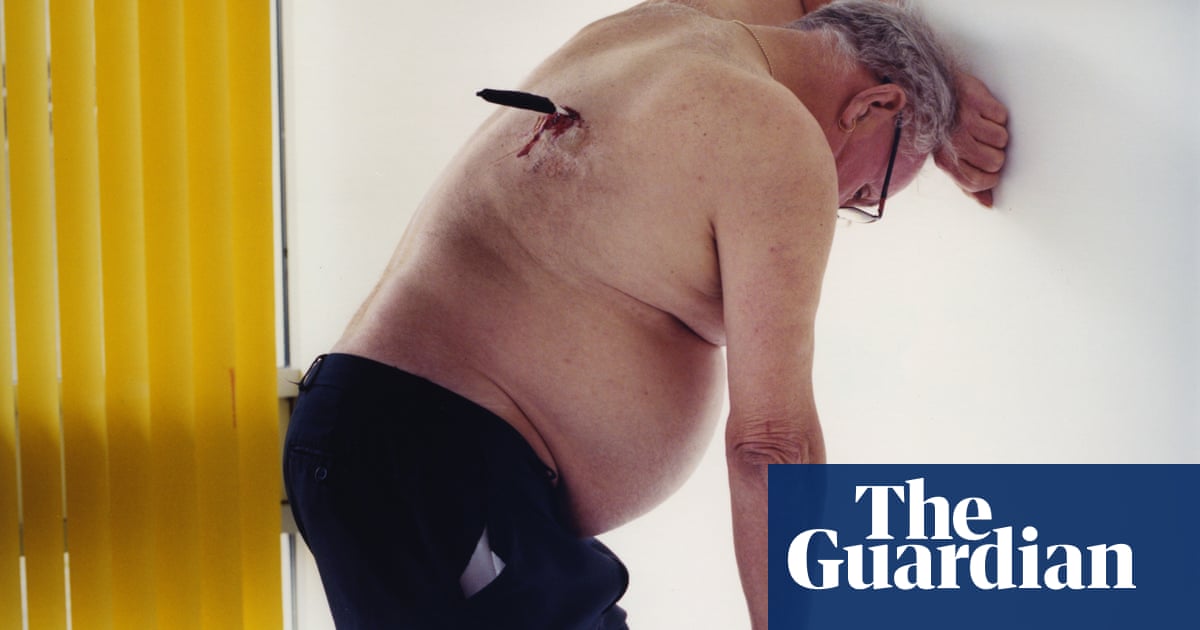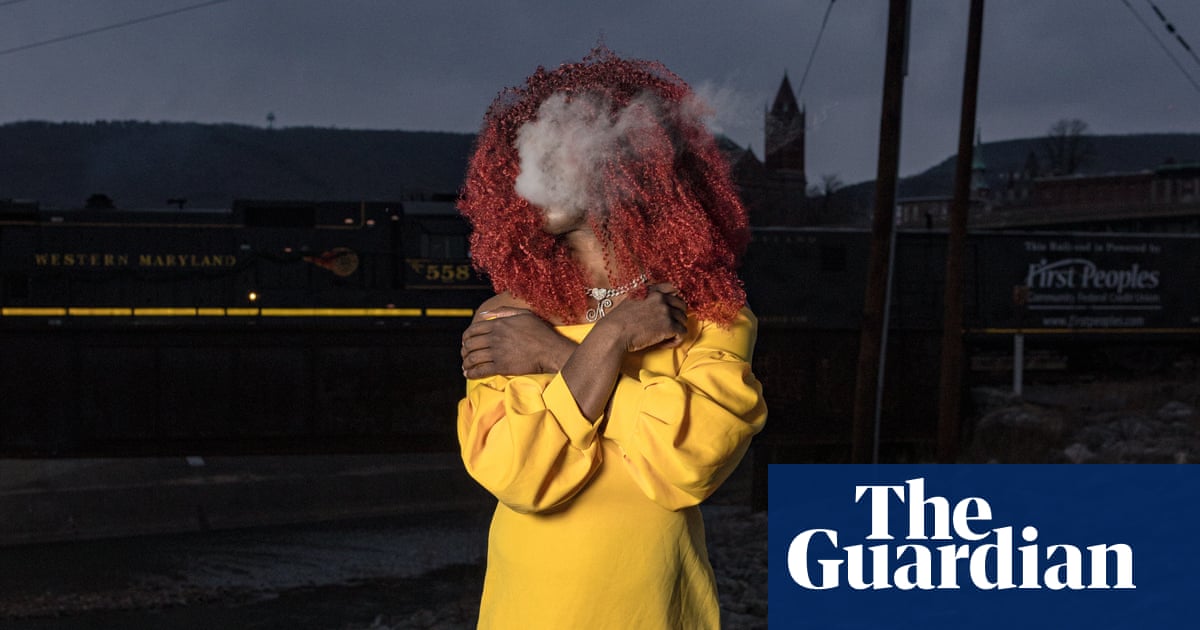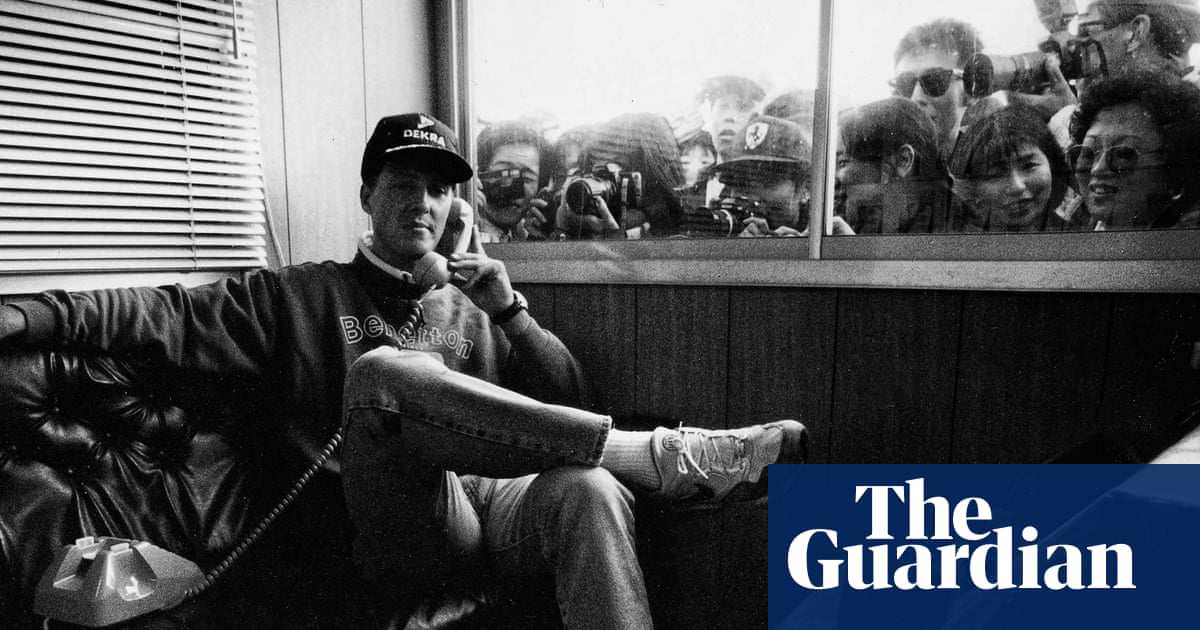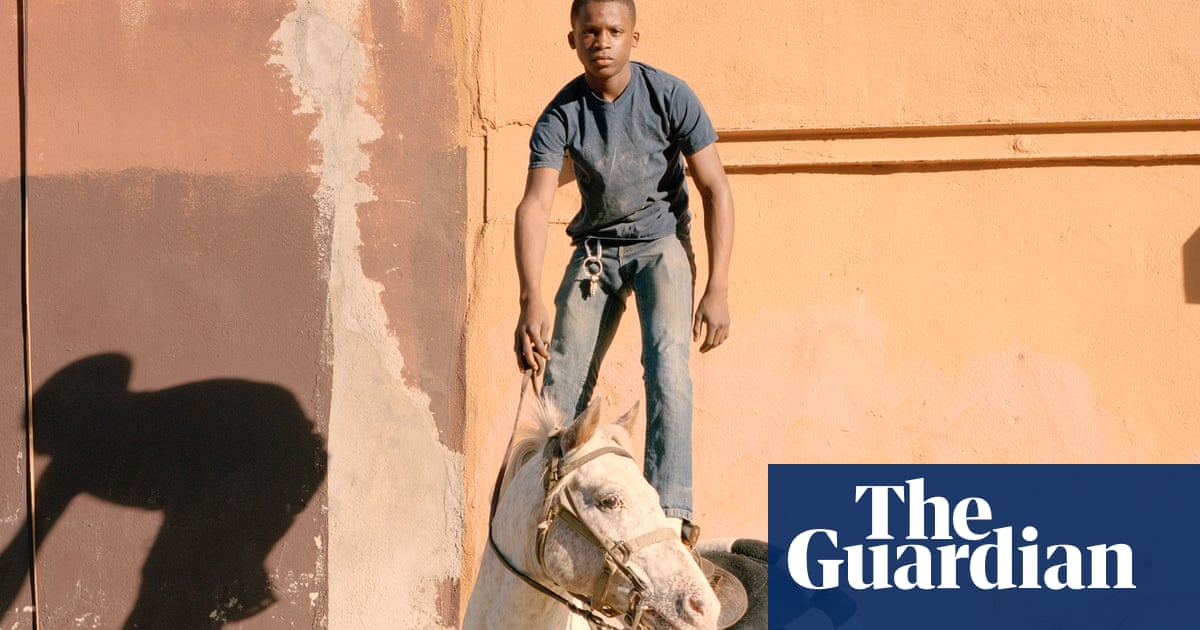
t all stemmed from a German sports drink. I’d done some advertising work for a brand called Isostar and they’d had this idea where you take a tennis player, put them on a red clay court and shoot them serving from above to capture the shadow. I thought, that is one hell of an idea, but I need the right vehicle to really do it justice.
Shortly afterwards Sports Illustrated called asking me to go and shoot Michael Jordan for them. I thought – well, there’s the vehicle! We’d never met but I knew he’d be perfect for it.
The shoot happened in July 1987 in a town called Lisle, Illinois, a suburb of Chicago. Michael had a children’s camp there so I did some portraits on the first day and then on the second day we did this picture.
I didn’t know which kit he would show up in so my assistants painted one area of this giant parking lot blue and another area red. If he’d worn his white uniform we’d have gone to the red court and this image would be called The Red Dunk. You can’t have a stationary basket to do this picture, we needed a proper NBA one on rollers but we couldn’t find one in the whole of Chicago! I couldn’t believe it. We had to ship this one in from St Louis, Missouri. I hired a cherrypicker, too, so I could shoot him from above. The day before the shoot we tested it all out – we realised it was only possible between 2pm and 3pm because otherwise the shadows would become too elongated.
We lowered the basket by six inches or so, which you always would do with dunk shots; it’s just a lot easier that way. And then I shot him, 14 frames a second. We did maybe 15 dunks. Whenever I worked with Michael the game was always about the number. I’d say: “We’ve got Gatorade in today and they need 15 dunks” and he’d say: “Walter, I’ll give you three.” “I can’t work with three!” Eventually we’d agree on eight, but he’d get into it at some point and bring the house down.
I had no idea what I’d captured on this day. Originally I’d picked a different image from the shoot but my picture editor found this one instead – it was maybe 100th of a second later but there was just that extra bit of dynamism to it. In the top left corner of the original were the edges of the red court so I must have either cropped that out or retouched it. There’s also that crack in the cement running down the middle – should I have taken that out or not? In the end I thought: “You know what? It’s part of the picture.”
I started shooting sports games when I was 15. As soon as I processed my first film I knew my future was unlocked. A few years later I was working for Sports Illustrated. I’ll never forget my first assignment. My father, Walter Iooss Sr, drove me to Connecticut to shoot an 86-year-old sailor called Archie Chester. When he realised that the boy was the one taking the picture his whole face dropped. His one time to be in the greatest sports magazine in American history and it’s this kid taking his picture! That was the beginning for me. Over the years I’ve shot Cristiano Ronaldo, Serena Williams, Kobe Bryant, Chris Evert, Joe Montana, Arnold Palmer. The trick with shooting sports stars is to speak to them like a coach. They’re used to being told what to do and they don’t know about photography – they need direction. You don’t have long and they appreciate not having their time wasted.
I got to know Michael after this shot. We did a book together called Rare Air that sold 800,000 copies. He was a terrific person, very interesting, very smart. The way he looked, athletically speaking, was unmatched in the history of sport. Following the Chicago Bulls around was like following the Rolling Stones. Michael had his own locker room away from the team because everyone – and I mean everyone – wanted to meet him. If the president had arrived, people would still have been more interested in meeting Michael. He was more famous than them all.
But when we did this shot I didn’t know he would become such a legend. He was popular in 87 but nothing like what he became. He once said that he thought I couldn’t take a bad shot. But the truth is nobody could take a bad photo of Michael Jordan.
Walter Iooss’s CV
Born: Temple, Texas, 1943.
Trained: Germain School of Photography, New York.
Influences: John Zimmerman, Hy Peskin, Mark Kauffman ... all guys from Sports Illustrated.
High point: “When I was invited to the 50th Super Bowl in San Francisco as one of the few photographers who’d been to all of them.”
Low point: “I can’t think of one.”
Top tip: “Backgrounds. Bad background = bad picture.”












